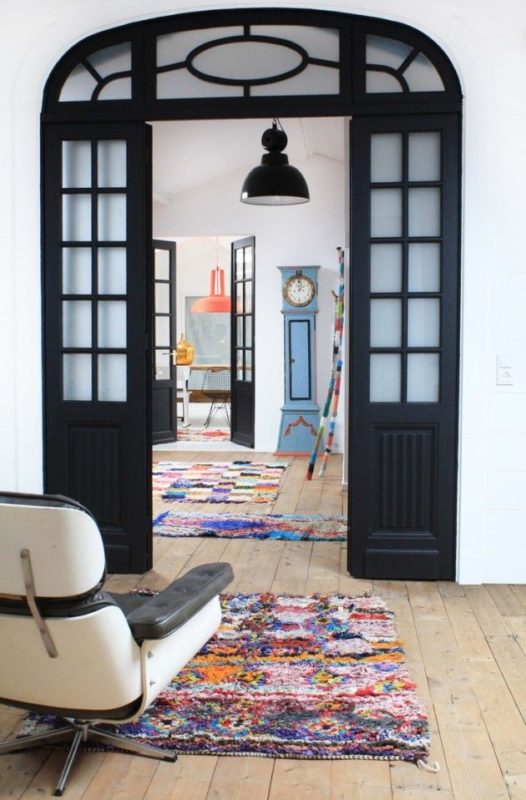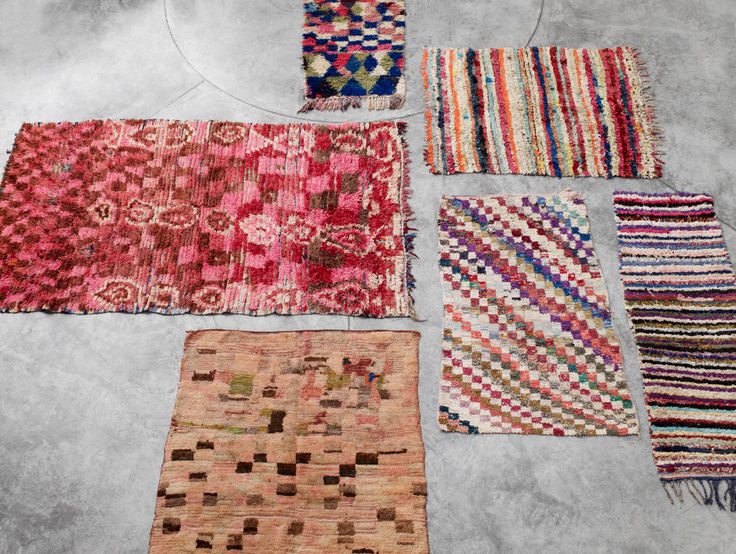
As home décor trends in the US become more and more global, American design-lovers are finding themselves captivated by textiles and techniques from cultures thousands of years old. This is especially true of rugs, one of our latest design obsessions, which have been covering the floors of homes all over the world since time immemorial. Some of the methods used to make our favorite rugs are as ancient as the civilizations that first created them. Others, like the Boucherouite rugs of…MORE Morocco’s Berber tribes, complicate simple categories of old and new, expanding on ancient traditions to meet the needs and conditions of modern life.
In essence the Boucherouite is a simple rag rug. Strips or unraveled fibers of older textiles, such as clothing or worn out rugs, are recycled and woven together to create something new. Yet the humble origins of these rugs serve only to accentuate the remarkable nature of the finished products which take full advantage, not only of the weaving skills of their makers, but of the benefits of their patchwork components.
One of the most striking features of Boucherouite rugs is the amazing variety of colors that they demonstrate, particularly when compared to more traditional Berber wares. This sudden explosion of color is largely attributable to the prevalence of synthetic fibers in their construction, which hold brighter, more vibrant colors than are often possible using natural dying techniques. Even more dazzling is the free form nature of the patterns that grace each rug. Shapes appear, fade and…MORE reappear as motifs and color palettes evolve all in the space of a single rug.


*Information and pictures from www.thespruce.com